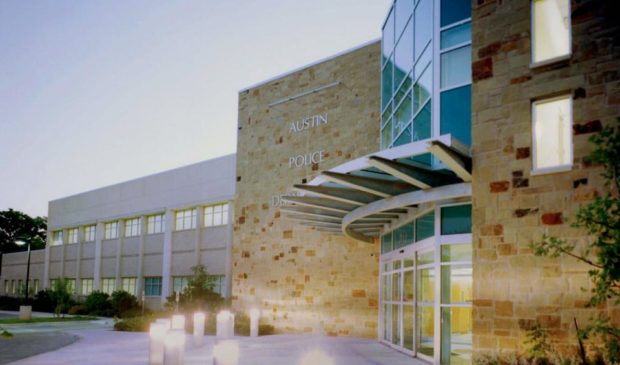‘No Way on Prop A’ campaign opposes police staffing initiative
Friday, September 10, 2021 by
Chad Swiatecki A political action committee focused on defeating a November ballot proposal that would significantly increase the size of the Austin Police Department held its first formal campaign event Thursday. More than 80 community groups and more than three dozen local elected officials have joined the No Way on Prop A coalition, which was formed in response to Save Austin Now PAC’s push for voters to approve a proposal that would require the city to have two police officers per every 1,000 residents. (Editor’s note: See our related article, “How many cops do we want and at what cost?” which discusses an estimate from the city’s budget office calculating the actual number of officers required as 2.13/1,000 or 2.35/1,000.)
The campaign event at Barton Springs came just after publication of an analysis by the city that estimates the level of staffing mandated by Proposition A – and the requirement that officers spend at least 35 percent of their time in the community instead of servicing 911 calls – would have a five-year cost of between $271.5 million and $598.8 million.
City Council members as well as other local officials, employee unions and community groups argue that the city would have to raise property taxes to the maximum allowable limit and make deep spending cuts to services such as parks and recreation.
David Chincanchan, a community organizer who helped lead Thursday’s event, called the ballot proposal an unfunded mandate that would significantly impact the city’s budget for years to come, “without being attached to any kind of accountability or requirements.”
Carol Guthrie, business manager for AFSCME Local 1624, said estimates based on the city’s budget projections put up to 1,100 jobs among her group’s 3,300 members at risk of layoff. With the requirement to add 500-800 new police officers, she said parks and libraries could be at risk of closure and voters may be asked in coming years to approve property tax rates above the state’s cap of a 3.5 percent annual increase.
“It’s a huge piece of the pie. And of course, the only way to get this additional funding will be through layoffs in departments for other services,” she said. “Clearly the city will have to vote to raise taxes above the 3.5 (percent annual increase), but I don’t think that will generate enough and they’d still have to cut services, and when you cut services that means cutting employees.”
Save Austin Now organizers said an increase in violent crimes over the past two years shows the need for the city to commit to an ongoing level of police staffing.
A statement from Save Austin Now said, “Low-income neighborhoods disproportionately hurt by skyrocketing homicide rates, 911 wait times and other horrific residual effects of the Council’s police defunding efforts are going to lead the way voting for Prop A. A police department with better trained, sufficiently staffed and foreign language-proficient officers are issues Austinites agree on …. City Hall may not support law enforcement, but city residents do.”
Local environmentalist and onetime City Council candidate Bobby Levinski said the proposition gained political strength in 2020 when Council voted to pause the police cadet academy and looked at moving some roles and jobs filled by police into other city departments and specialty areas.
“This petition is an overinflated response to the language around what happened to the Council’s vote. My view on Council’s vote was, it was a way to look at public safety through the lens of mental health, social services and addressing things in ways that are less enforcement-oriented,” he said. “That came to be viewed around the ‘defund the police’ talking point and perceived as slashing the police budget … and the police has been one of the most well-funded budgets in the city for years.”
The Austin Monitor’s work is made possible by donations from the community. Though our reporting covers donors from time to time, we are careful to keep business and editorial efforts separate while maintaining transparency. A complete list of donors is available here, and our code of ethics is explained here.
You're a community leader
And we’re honored you look to us for serious, in-depth news. You know a strong community needs local and dedicated watchdog reporting. We’re here for you and that won’t change. Now will you take the powerful next step and support our nonprofit news organization?






